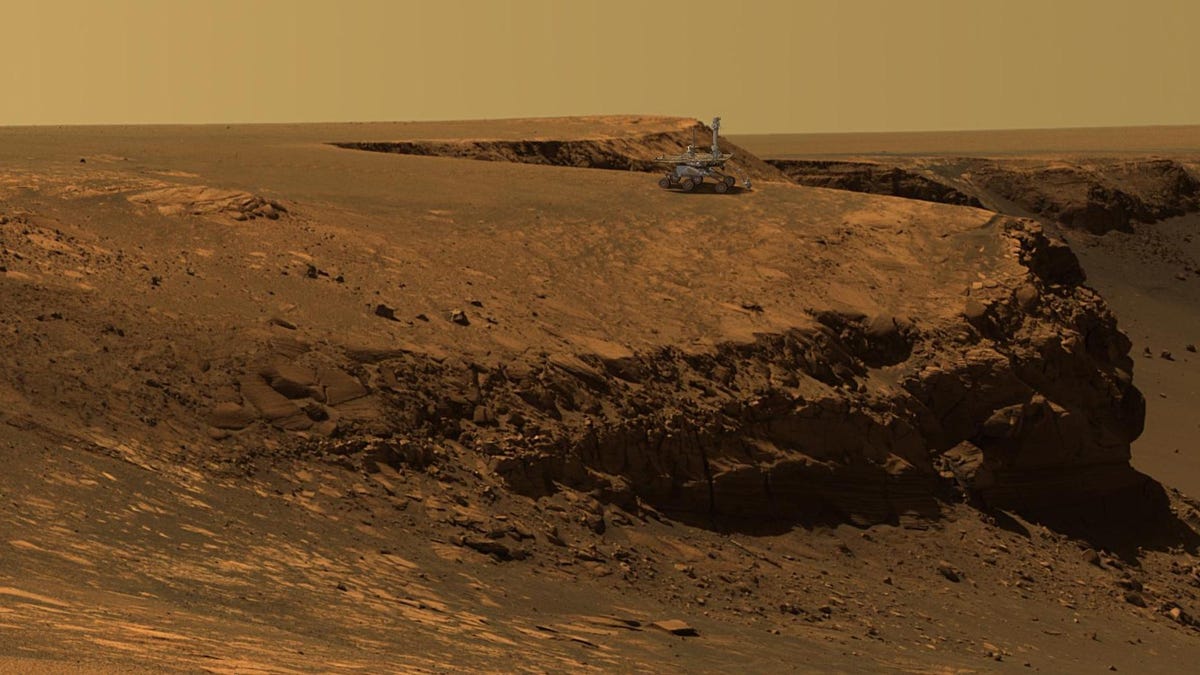NASA keeps sending rovers to Mars, and the Red Planet won't stop killing them
Opportunity, Spirit, Schiaparelli -- the body count is piling up on Mars. So why do we keep sending our adorable robots up there and who are we sending as the next tribute?

Fifteen years ago, Opportunity touched down on the Red Planet for a mission that was supposed to last just over 90 days.
But while it might not have even had a chance to unpack its bags with that kind of timeline, Oppy far exceeded its original shelf life.
An artist's concept of NASA's Opportunity rover on the surface of Mars.
The Little Rover That Could traipsed around for 5,352 sols (equivalent to 5,498 Earth days) covering more than 45 kilometres (28 miles) and sending back valuable data for researchers. That included discoveries that pointed to signs of water on the planet in the past and evidence that Mars could have supported ancient microbial life.
All that bodes well for us humans as we think about travelling to Mars in the future, thanks to our rather unfortunate reliance on water.
But while Opportunity survived for eight Martian years and lived far longer than its twin rover on the Mars Exploration Rover program (the equally positive sounding Spirit), Earth lost contact with it in 2018 and eventually declared the mission complete in February 2019.
While the world has mourned the loss of a particularly adorable and helpful robot, one question remains: Why does Mars keep killing all the stuff we shoot up there?
In this week's episode of Watch This Space, we take a look at the death of Opportunity and the travails of the rovers that came before it. Why were they sent to Mars? What conditions did they need to overcome to survive? And how did Mars eventually kill them all?
From the science we've scienced along the way to the next steps for Martian discovery, we look at all the things the world's rovers have achieved and what the next phase of Mars exploration looks like.
Because while Mars might have claimed NASA's little Wall-E rover, that's not going to stop us from launching more rovers and getting them to reccy the planet before us humans head to Mars as well.
To learn more about the death of NASA's little Wall-E rover and what else we've got in store for Mars, check out this week's episode of Watch This Space. You can get your space fix every other Friday with new episodes, or catch up with the whole series on CNET or YouTube.

